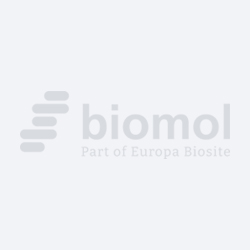Cookie preferences
This website uses cookies, which are necessary for the technical operation of the website and are always set. Other cookies, which increase the comfort when using this website, are used for direct advertising or to facilitate interaction with other websites and social networks, are only set with your consent.
Configuration
Technically required
These cookies are necessary for the basic functions of the shop.
"Allow all cookies" cookie
"Decline all cookies" cookie
CSRF token
Cookie preferences
Currency change
Customer-specific caching
FACT-Finder tracking
Individual prices
Selected shop
Session
Comfort functions
These cookies are used to make the shopping experience even more appealing, for example for the recognition of the visitor.
Note
Show the facebook fanpage in the right blod sidebar
Statistics & Tracking
Affiliate program
Conversion and usertracking via Google Tag Manager
Track device being used

| Item number | Size | Datasheet | Manual | SDS | Delivery time | Quantity | Price |
|---|---|---|---|---|---|---|---|
| F0025-77C.50 | 50 µg | - | - |
3 - 19 business days* |
1,100.00€
|
If you have any questions, please use our Contact Form.
You can also order by e-mail: info@biomol.com
Larger quantity required? Request bulk
You can also order by e-mail: info@biomol.com
Larger quantity required? Request bulk
Fc Receptor-Like 5 (FCRL5), also known as FcRH3 (FcRH5 in human), IRTA2, and CD307e, is a 90-95kD... more
Product information "FCRL5, Recombinant, Mouse (Fc Receptor-like Protein 5, FcR-like Protein 5, BXMAS1, Fc Receptor Homol"
Fc Receptor-Like 5 (FCRL5), also known as FcRH3 (FcRH5 in human), IRTA2, and CD307e, is a 90-95kD member of the FCRL family of proteins whose aa sequence is reminiscent of that for classical Fc receptors. FCLR molecules are type 1 transmembrane proteins that contain from three to nine immunoglobulin-like domains. They are differentially expressed within the B cell lineage, and can either promote or inhibit B cell proliferation and activation. Mature mouse FCRL5 consists of a 470aa extracellular domain (ECD), a 21aa transmembrane segment, and a 79aa cytoplasmic region. The ECD contains five Ig-like domains, while the cytoplasmic region possesses one ITAM-like motif and one immunotyrosine inhibitory motif (ITIM). There are two major alleles for FCLR5 in mouse. The first was just described, and is found in BALB/c plus NZB mouse strains. The second is found in C57BL/6 mice, and differs by eleven scattered aa in the ECD. This creates one additional N-linked glycosylation site, and increases the SDS-PAGE MW by 5kD. Alternate splicing of mouse FCRL5 generates at least one additional isoform that lacks the first Ig-like domain aa3-90 of the mature molecule). Human FCRL5, by contrast, contains up to nine Ig-like domains in a highly variable ECD, and over common regions, mouse and human FCRL5 share 49% aa sequence identity. CRL5 expression is restricted to mature B lineage cells in lymphoid tissues and blood, and is particularly noted to be expressed on T-independent marginal zone and B1 B cells. Its ligation inhibits signaling through the B cell antigen receptor. Epstein-Barr virus transformation of B cells induces the up-regulation of surface FCRL5 by a direct effect of its EBNA2 protein on FCRL5 gene transcription. FCRL5 on B cells functions as a receptor for the orthopoxvirus MHC class I-like protein OMCP. And based on the literature and testing, both mouse and human FCRL5 will bind to purified IgG with high affinity. In human, the FCRL5 gene maps to the 1q21 chromosomal locus, a common site of rearrangements in B cell malignancies. Notably, the FCRL5 protein is preferentially expressed in cell lines with 1q21 abnormalities, and is up-regulated on tumor cells in some types of B cell malignancies. In addition, soluble FCRL5 is elevated in the serum of many B cell leukemia patients. Source: Recombinant corresponding to aa1-496 from mouse FCRL5 fused to 6-His tag at C-terminal expressed in Murine myeloma cell line, NSO. Molecular Weight: ~53.5kD, Biological Activity: Measured by its ability to bind mouse IgG with an estimated kD~400nM. Endotoxin: ~1EU/1ug (LAL) , Storage and Stability:, Lyophilized powder may be stored at -20°C. Stable for 12 months at -20°C. Reconstitute with sterile buffer. Aliquot to avoid repeated freezing and thawing. Store at -20°C. Reconstituted product is stable for 3 months at -20°C. For maximum recovery of product, centrifuge the original vial after thawing and prior to removing the cap. Further dilutions can be made in assay buffer.
| Keywords: | Fcrh3, Fcrl5, FcRL5, FcRH3, mBXMH2, CD307e, moFcRH3, FcR-like protein 5, Fc receptor homolog 3, BXMAS1-like protein 2, Fc receptor-like protein 5 |
| Supplier: | United States Biological |
| Supplier-Nr: | F0025-77C |
Properties
| Conjugate: | No |
| Species reactivity: | mouse |
| Format: | Highly Purified |
Database Information
| KEGG ID : | K06727 | Matching products |
| UniProt ID : | Q68SN8 | Matching products |
| Gene ID : | GeneID 329693 | Matching products |
Handling & Safety
| Storage: | -20°C |
| Shipping: | +4°C (International: +4°C) |
Caution
Our products are for laboratory research use only: Not for administration to humans!
Our products are for laboratory research use only: Not for administration to humans!
Information about the product reference will follow.
more
You will get a certificate here
Viewed

